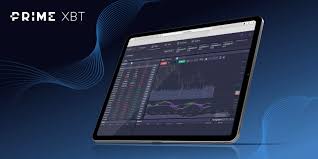How to Change Leverage on Trading Platforms Effectively

How to Change Leverage on Trading Platforms Effectively
In the world of online trading, leverage is a powerful tool that can amplify your potential profits, but it also comes with increased risks. Many traders begin their journey seeking effective strategies to manage their investments. One critical aspect of trading that often gets overlooked is the ability to change leverage on trading platforms. Understanding how to change leverage on your platform can be the key to optimizing your trading strategy. For detailed promotions and offers, check out how to change leverage on primexbt https://primexbtinvest.com/promotions-and-offers/. Below is a comprehensive guide that will help you navigate this crucial aspect of trading.
What is Leverage?
Leverage in trading refers to the use of borrowed funds to increase the potential return on investment. It allows traders to control larger positions than they would be able to with their own capital alone. For example, a leverage ratio of 100:1 means that for every $1 you have, you can control $100 in the market. This can enhance your profits, but it’s important to note that it can also magnify losses if the market moves against you.
Why Change Leverage?
Changing leverage can significantly impact your trading effectiveness. Here are some reasons why you might want to adjust your leverage:
- Risk Management: A lower leverage ratio can be less risky, as it decreases the potential for large losses. Adjusting leverage based on your risk appetite is essential.
- Market Conditions: Depending on market volatility, a trader might choose to increase or decrease their leverage. In a stable market, higher leverage may be acceptable, while in a volatile market, lower leverage can be wiser.
- Trading Strategy: Different trading strategies may require different leverage settings. Day traders often use higher leverage for quick trades, whereas long-term investors may prefer lower leverage.
Steps to Change Leverage on Your Trading Platform
The process to change leverage generally varies from one trading platform to another, but the core concept remains similar. Below are the general steps to change leverage on most platforms:

1. Log into Your Trading Account
Your journey begins by logging into your trading account. Make sure you have your login credentials handy. Security protocols may require additional verification.
2. Access Account Settings
Once logged in, navigate to the account settings. This is often found in the main menu, possibly under ‘Profile’ or ‘Settings’.
3. Find Leverage Settings
Look for options related to leverage or margin settings under the account settings. This could also be termed as ‘Account Leverage’, ‘Margin Levels’, or similar.
4. Select Your Desired Leverage
Most platforms will allow you to select from predefined leverage options (e.g., 1:1, 1:10, 1:50, etc.). Choose the leverage that best fits your current trading strategy and risk profile.
5. Save Changes

After selecting the desired leverage, ensure to save the changes. Some platforms may require you to confirm the changes via email or SMS.
6. Monitor Your Positions
Once your leverage is changed, it’s crucial to monitor your open positions carefully, particularly if you’ve increased the leverage. Adjust your stop-loss orders and be aware of your margin requirements.
Common Mistakes When Changing Leverage
While understanding how to change leverage is important, it’s equally crucial to avoid common pitfalls:
- Over-leveraging: Many new traders fall into the trap of using too much leverage. Start conservatively to mitigate risks.
- Ignoring Market Conditions: Make changes based on your strategy and market volatility. Avoid setting leverage limits without analyzing current market trends.
- Not Staying Informed: Keep up with how changing rates affect your trading. Regularly adjust your leverage strategy according to market conditions and personal trading goals.
Conclusion
Understanding how to change leverage on your trading platform is a pivotal skill that can significantly affect trading outcomes. By adapting your leverage according to market conditions, your trading strategy, and your personal risk tolerance, you empower yourself to trade more effectively. Remember, leverage can amplify both profits and losses; therefore, always be cautious and strategic in your approach. Take the time to revisit your leverage settings frequently and make the necessary adjustments as your trading journey evolves.
Happy trading, and may your leverage decisions be wise!



